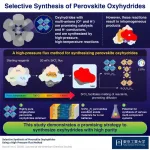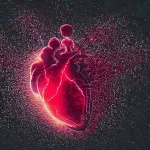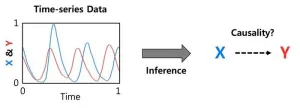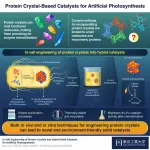(Press-News.org) **Images available**
Nine European countries, including the UK, have today (25 July 2023) joined forces to commit to the construction of the European Solar Telescope (EST)
The EST will be the biggest solar telescope ever constructed in Europe and aims to provide unparalleled new insights into the phenomena of space weather
The University of Sheffield will lead a consortium of UK universities that will help to develop designs for the construction of the large-aperture solar telescope
The first light of the EST is planned for 2028-2029
Construction of the largest ever solar telescope built in Europe, designed to provide unparalleled insight into the phenomena of space weather, will be supported by the University of Sheffield, it has been announced today (25 July 2023).
Launched in 2008, the European Solar Telescope (EST) project aims to provide valuable insights into the mechanisms underlying solar flares and coronal mass ejections. These events determine so-called ‘space weather’, which can lead to geomagnetic storms on earth - seen as the northern lights - and have a strong influence on our technological society.
Leading the United Kingdom Universities Consortium (UKUC), the University of Sheffield today signed the deed of the EST’s Canary Foundation in Santa Cruz, Tenerife. The agreement sees six UK universities, including Aberystwyth, Belfast, Durham, Exeter and Glasgow, along with a further six European countries, commit to the construction of the telescope at the world-renowned El Roque de los Muchachos Observatory, at La Palma in Spain.
Professor Robertus von Fay-Siebenburgen, from the University of Sheffield’s School of Mathematics and Statistics, will be a principal investigator for the UKUC project. He said: “The EST will be the biggest ground-based solar telescope constructed in Europe and will keep its European partners at the forefront of solar physics research, so it's fantastic that so many UK partners have been able to come together to join the EST Canary Foundation today.
“This kind of unrivalled research infrastructure will provide European astronomers and plasma-astrophysicists with an extraordinary tool for observing the Sun and its space weather, one that will pave the way for scientific advancements in some of the world’s biggest and most important challenges, such as the development of green fusion energy.
“By being able to study the physical processes happening in the solar chronosphere in such detail for the first time, we will gain new insight into how the heating mechanisms occur that underpin the plasma heating processes. Learning from how nature does it will help us explore how to replicate the process for the benefit of humankind.”
One of the EST’s primary objectives is to improve understanding of the Sun by observing its magnetic fields in unprecedented detail. Once operational, it will be able to uncover signals currently hidden in the noise and reveal the existence of unknown, tiny magnetic structures.
The optical configuration and instrumentation of EST have been meticulously designed to study the magnetic and dynamic coupling of the solar atmosphere, and capture the interactions between the different atmospheric layers of the Sun.
Additionally, a comprehensive set of instruments will be installed to enable simultaneous observations across multiple wavelengths. This unique capability will give the EST a higher efficiency compared to existing or future telescopes, whether ground-based or space-borne.
The University of Sheffield will be developing designs for the capability of the project to process the vast amounts of data produced by the telescope. It is estimated to produce a petabyte of data per day, roughly equivalent to the amount of data used to store more than 220,000 DVD films. Sheffield will be responsible for how the project can handle and analyse some of this data, which, at the moment, few scientific projects around the world come close to doing. This means that entirely new capabilities are needed to conduct research on such a scale.
The preliminary design phase of the telescope, which was funded by the European Commission’s Horizon 2020 programme, has recently been completed. After a construction period of six years, the EST’s first light - or becoming operational - is planned for 2028-2029.
The establishment of the EST Foundation today marks a crucial milestone in advancing the project towards the construction phase. One of the primary objectives of the Foundation is to create a European Research Infrastructure Consortium (ERIC), which will bring together the national ministries of the partner countries. The EST ERIC will be the legal entity responsible for overseeing all aspects of the construction and operation of this large research infrastructure.
Professor Lyndsay Fletcher, of the University of Glasgow’s School of Physics and Astronomy, was part of the team responsible for defining the telescope requirements. She said: “The University of Glasgow has a long history of world-leading research in solar physics, and I very much welcome our investment towards bringing this exciting new facility into being.
“Our research into solar flares and prominences stands to benefit enormously, since the innovative design of the telescope means that it is optimised for measuring the Sun’s magnetic field, which governs these energetic phenomena. Novel instrumentation, recording the Sun’s structure and dynamics with four times the spatial detail of any existing solar telescope in Europe will lead to a step-change in understanding of energetic events on our nearest star.”
For more information about the project, please visit: www.est-east.eu
ENDS
Media contact: Rebecca Ferguson, Media & PR Officer, 0114 222 3670, r.l.ferguson@sheffield.ac.uk
Notes to editors:
Members of the EST Foundation
Astronomický Ústav AV ČR, V. V. I. (Czech Republic)
Leibniz-Institut für Sonnenphysik KIS (Germany)
Max-Planck-Gesellschaft zur Foerderung der Wissenschaften (Germany)
Astronomical Institute of the Slovak Academy of Sciences (Slovakia)
Agencia Estatal Consejo Superior de Investigaciones Científicas (Spain)
Instituto de Astrofísica de Canarias (Spain)
Università della Svizzera Italiana (Switzerland)
Stockholms Universitet (Sweden)
University of Sheffield (UK), representing the United Kingdom Universities Consortium (Aberystwyth, Durham, Exeter, Glasgow, Sheffield and Queen's University Belfast) END
UK and Europe join forces for construction of largest ever European Solar Telescope
2023-07-25
ELSE PRESS RELEASES FROM THIS DATE:
PSMA PET imaging improves accuracy of predicting prostate cancer recurrence
2023-07-25
A molecular imaging tool developed by researchers at the University of California’s two nationally ranked medical centers, UCLA and UCSF, helps improve the accuracy of predicting the risk of cancer recurrence in patients with intermediate to high-risk prostate cancer who undergo surgery.
The tool, known as prostate-specific membrane antigen PET imaging, or PSMA PET, provides prognostic information before treatment begins that can predict if the patient will have a high risk for the cancer returning after surgery.
“In patients ...
All US racial and ethnic minority groups are underrepresented in Alzheimer’s neuroimaging research, study shows
2023-07-25
Alzheimer’s disease (AD), which affects an estimated 6.5 million adults in the United States, hits some groups harder than others. Compared to non-Hispanic whites, Hispanic Americans are 1.5 times as likely to develop AD, and African Americans are twice as likely.
But scientists know little about the reasons behind these disparities, because the vast majority of AD research has been done with non-Hispanic white people.
A new study that reviewed 11,871 research articles on AD brain imaging, led by researchers at the Keck School of Medicine of USC, has now revealed the extent of ...
84% cut in Covid deaths for UK cancer patients following vaccine rollout
2023-07-25
Cancer patients saw a significant fall in Covid-related hospitalisations and mortality following the rollout of vaccines in the first panoramic study of its kind.
The research published in Scientific Reports today (Tuesday 25 July) looked at the impact of the global pandemic on case-outcome rates for cancer patients across a 21-month period from November 2020 to August 2022. The team of researchers led by the University of Birmingham found that hospitalisations in the period fell from nearly one in three patients (30.58%) to one in 13 patients (7.45%); and, case-mortality rates fell from more than one in five patients (20.53%) to less than one in 30 patients (3.25%).
Among ...
A chance to design better vaccines?
2023-07-25
A new paper in Biology Methods & Protocols, published by Oxford University Press, shows it may be possible to design vaccines that will induce a stronger immune response to infecting pathogens, such as the virus causing COVID-19. In this study, the authors proposed and tested a new bioinformatic approach and tool that allows researchers to select parts of proteins that will elicit a strong immune response. Vaccines developed based on this approach would provide better protection from diseases.
The immune system of humans (and other vertebrates) discriminates between self and non-self structures to attack and destroy the latter. T cells are the part of the immune system ...
A high-pressure flux method to synthesize high-purity oxyhydrides
2023-07-25
Adding a flux during the synthesis of oxyhydrides is a promising strategy to obtain a pure, homogenous product, reveal scientists from Tokyo Tech. An SrCl2 flux promoted the melting of a part of reactants and facilitated their diffusion of reactants, which proved to be the key to producing highly pure SrVO2.4H0.6 or Sr3V2O6.2H0.8 perovskite oxyhydrides in high-pressure and high-temperature reactions. These compounds have potential as catalysts and as electrode materials for lithium-ion batteries.
Perovskite oxyhydrides ...
Multi-levitation bioprinting of heart models for space exploration and medicine
2023-07-25
As a bold venture at the forefront of biomedical research, the PULSE project is poised to develop paradigm-changing bioprinting technology for applications in space and on Earth. Awarded nearly 4 million euros by the European Innovation Council’s Pathfinder Open, PULSE emerges from interdisciplinary scientific collaborations and, over five years, will foster technological innovations to improve human health and pave the way for safer and more sustainable space exploration.
By combining magnetic and acoustic levitation into an innovative bioprinting platform, PULSE’s device should be capable of achieving unparalleled spatiotemporal control of cell deposition. ...
CHOP researchers validate pediatric “allergic march” in largest national study of its kind
2023-07-25
Philadelphia, July 25, 2023—In the largest study of its kind, researchers from Children’s Hospital of Philadelphia (CHOP) used electronic health record (EHR) data from more than 200,000 pediatric patients to describe patterns of pediatric allergies across the United States, validating a population-level pattern of allergy development known as the “allergic march,” in which allergies first present as eczema, followed by food allergies, asthma, and environmental allergies. The ...
Introducing GOBI: A breakthrough computational package for inferring causal interactions in complex systems
2023-07-25
In the quest to unravel the underlying mechanisms of natural systems, accurately identifying causal interactions is of paramount importance. Leveraging the advancements in time-series data collection through cutting-edge technologies, computational methods have emerged as powerful tools for inferring causality. However, existing model-free methods have struggled to differentiate between generalized synchrony* and causality, leading to false predictions. On the other hand, model-based methods, while accurate, have been limited by their dependence on specific models, hindering their widespread applicability.
*Synchrony ...
Towards artificial photosynthesis with engineering of protein crystals in bacteria
2023-07-25
In-cell engineering can be a powerful tool for synthesizing functional protein crystals with promising catalytic properties, show researchers at Tokyo Tech. Using genetically modified bacteria as an environmentally friendly synthesis platform, the researchers produced hybrid solid catalysts for artificial photosynthesis. These catalysts exhibit high activity, stability, and durability, highlighting the potential of the proposed innovative approach.
Protein crystals, like regular crystals, are well-ordered molecular structures with diverse properties and a huge potential for customization. They can assemble naturally from materials found within cells, which not only greatly reduces the synthesis ...
New study on sleep/circadian disturbance’s impact on multiple chronic pain disorders
2023-07-25
Can poor sleep and circadian rhythm make chronic pain conditions worse? Edson College Assistant Professor Chung Jung Mun plans to find out through an innovative longitudinal study.
Mun was awarded a $3 million grant from the National Institute of Neurological Disorders and Stroke, part of the U.S. National Institutes of Health, to explore the possible connection.
“There are countless individuals suffering from multiple chronic pain disorders. A person with chronic migraine headaches is also likely to suffer from chronic low back pain. What we’re trying to find ...



